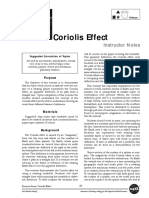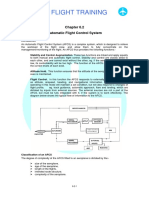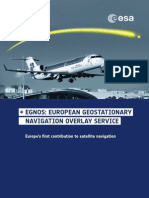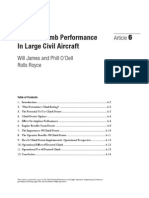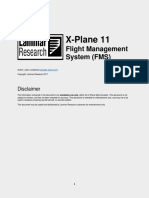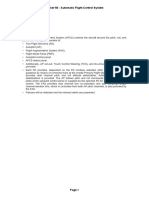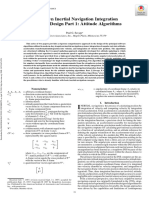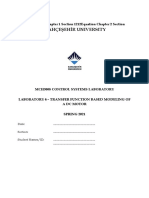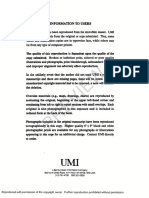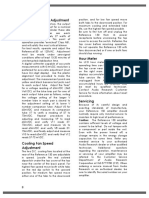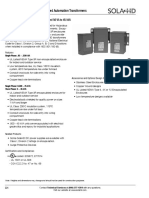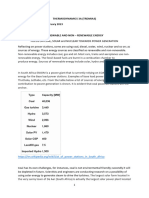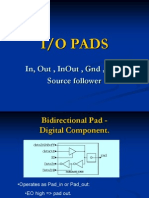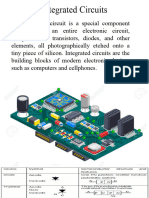0% found this document useful (0 votes)
199 views68 pagesInertial Navigation Basics
This document provides an introduction to inertial navigation through a tutorial presented by Yuanxin Wu from Shanghai Jiao Tong University. The lecture outline covers topics including kinematic basics, inertial navigation computation, attitude alignment and initialization, INS error equations, and inertial and magnetic calibration. Inertial navigation is defined as dead reckoning forward from the current position using inertial measurements. The principles of inertial navigation rely on Newton's laws of motion and obtaining acceleration, velocity and position references from inertial sensors like gyroscopes and accelerometers within an Earth-centered inertial reference frame. Various types of inertial sensors and their applications, limitations, and developing trends are discussed.
Uploaded by
Nicoli LourençoCopyright
© © All Rights Reserved
We take content rights seriously. If you suspect this is your content, claim it here.
Available Formats
Download as PDF, TXT or read online on Scribd
0% found this document useful (0 votes)
199 views68 pagesInertial Navigation Basics
This document provides an introduction to inertial navigation through a tutorial presented by Yuanxin Wu from Shanghai Jiao Tong University. The lecture outline covers topics including kinematic basics, inertial navigation computation, attitude alignment and initialization, INS error equations, and inertial and magnetic calibration. Inertial navigation is defined as dead reckoning forward from the current position using inertial measurements. The principles of inertial navigation rely on Newton's laws of motion and obtaining acceleration, velocity and position references from inertial sensors like gyroscopes and accelerometers within an Earth-centered inertial reference frame. Various types of inertial sensors and their applications, limitations, and developing trends are discussed.
Uploaded by
Nicoli LourençoCopyright
© © All Rights Reserved
We take content rights seriously. If you suspect this is your content, claim it here.
Available Formats
Download as PDF, TXT or read online on Scribd
/ 68







